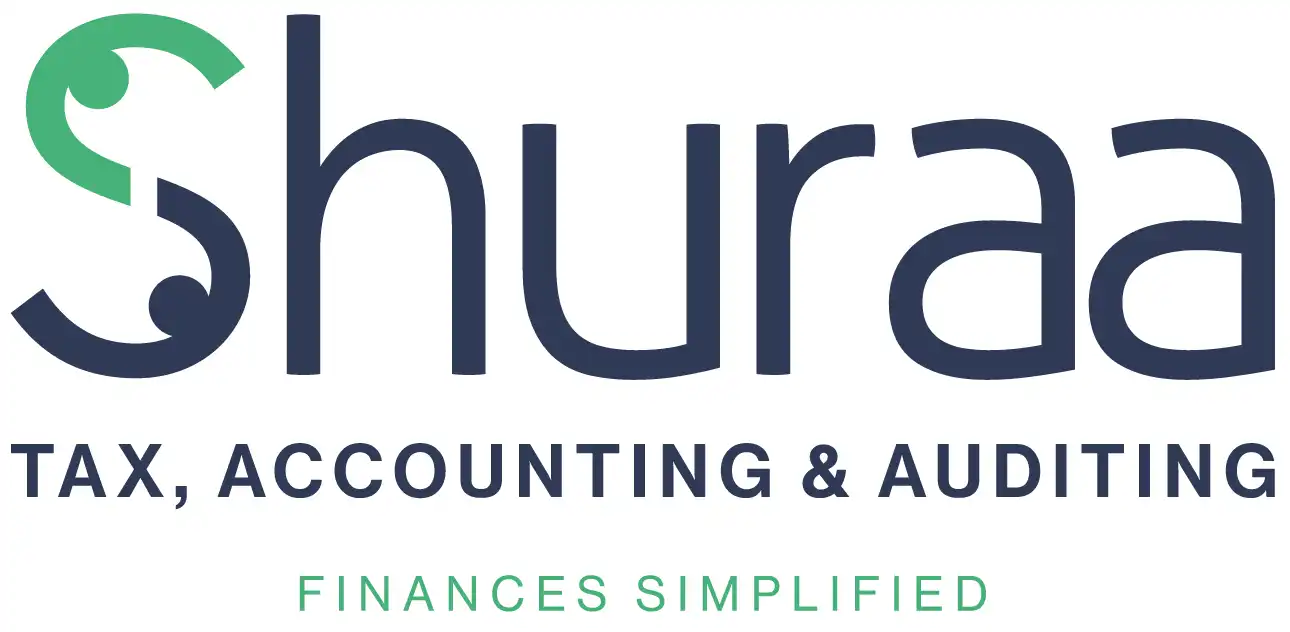Table of Contents
- What is a VAT return in UAE?
- What is a VAT Return Form?
- Who must file a VAT return in UAE?
- Key Filing Dates for VAT Returns in the UAE
- Details Required to File VAT 201 Return Form
- Overview of Sections in the VAT Return Form: Pre-Populated Data and Taxpayer Details
- Step-by-Step Guide to Filing VAT Return in UAE Using Form VAT 201
- Documents required for VAT Return filing in the UAE
- Penalties Associated with VAT Returns in UAE
- VAT Return Filing in Dubai, UAE
- FAQs
The implementation of the Value Added Tax (VAT) system in the United Arab Emirates (UAE) has made it essential for businesses to accurately file VAT returns in UAE and comply with tax regulations. A VAT return in UAE is a formal declaration of a company’s taxable sales and purchases within a specific period. Ensuring timely VAT return filing in UAE helps businesses maintain compliance and avoid penalties.
All taxable businesses must submit UAE VAT returns by the deadline, typically the 28th of the month following the relevant tax period. Failure to do so may result in fines or legal consequences. Understanding the UAE VAT return format is crucial, as it ensures accurate VAT reporting on sales, purchases, and other taxable transactions.
This guide provides a step-by-step approach to VAT return filing in UAE, covering the VAT return form, submission procedure, and key considerations for businesses to meet their tax obligations efficiently.
What is a VAT return in UAE?
A VAT return in UAE is an official document that VAT-registered businesses must submit to the Federal Tax Authority (FTA), reporting the VAT collected on taxable supplies and the VAT paid on expenses. This process, known as VAT return filing in UAE, helps businesses calculate their net VAT payable or refundable.
VAT returns UAE typically follow a quarterly or monthly filing schedule, depending on the business’s tax registration details. Timely submission of UAE VAT return is crucial to avoid penalties and ensure compliance with UAE tax laws. The VAT return form includes total sales, purchases, output VAT, input VAT, and the final VAT amount payable or reclaimable.
What is a VAT Return Form?
The Form VAT 201 in the UAE is broadly categorised into seven sections, each serving a specific purpose in reporting taxable sales and purchases. These sections are:
- Tax Period: It will be auto captured.
- Output VAT: This section reports the VAT collected on taxable sales. Businesses must provide the total value of standard-rated sales, zero-rated sales, and exempt sales, along with the corresponding VAT amounts. It is obligatory to mention local taxable sales emirates-wise and corresponding VAT.
- Input VAT: Businesses report the VAT paid on eligible business purchases. This includes input VAT on goods and services acquired for business purposes, which can be offset against the output VAT liability.
- Adjustments: If any adjustments need to be made to previously reported amounts, harmful debt adjustments, or adjustments in the capital scheme. This section allows businesses to provide details and explanations for such changes.
- Import details: Descriptions 3, 6 and 7 mention imports of goods and services and adjustments. Details of imports linked with TRN will auto-populate.
- Total VAT Due and Refunds: Businesses calculate the net VAT liability or the refundable amount by subtracting the input VAT from the output VAT. This section displays the total VAT due or the refundable VAT, if applicable.
- Profit margins: The business needs to mention if the profit margin scheme is applied for the reportable tax period.
- Declaration and Signature: The final section requires the authorised person to declare the accuracy of the information provided and affix their signature, acknowledging their responsibility for the contents of the VAT return.
By organising the VAT returns in UAE into these distinct sections, Form VAT 201 streamlines the reporting process, ensuring that businesses can accurately report their taxable sales and purchases in a structured manner.
Who must file a VAT return in UAE?
Businesses registered under VAT in the UAE must comply with VAT return filing in UAE regulations. The UAE VAT return must be filed by taxable businesses and individuals whose taxable supplies and imports exceed the mandatory registration threshold of AED 375,000. Additionally, voluntary registration is allowed for businesses with taxable supplies exceeding AED 187,500.
The VAT return in UAE is typically filed every quarter, though some businesses may be required to file monthly. The Federal Tax Authority (FTA) mandates that companies submit their VAT returns UAE through the FTA portal, ensuring accurate reporting of output VAT (collected from customers) and input VAT (paid on purchases).
Failure to meet the VAT return deadlines can result in penalties, making it crucial for businesses to comply with UAE tax regulations.
Key Filing Dates for VAT Returns in the UAE
The key filing dates for VAT returns in the UAE are as follows:
- Monthly and Quarterly Deadlines: For both monthly and quarterly VAT returns in the UAE, the deadline for filing is set as the 28th day of the month following the end of the VAT return period. For example, if you are filing a quarterly VAT return for the period from February to April, the deadline for filing this return would be the 28th of May. In the case of public holidays or weekends on the 28th day, then deadlines will be extended to the following working day.
- First Tax Period: The first tax period can vary for each business based on individual instructions received from the Federal Tax Authority (FTA). For instance, if your first tax period is from January 1 to January 31, you must file your VAT return for this period on or before February 28/29. If your first tax period is Jan- Mar 23, then VAT return will be due by 28th April (or the next business day if February 28 falls on a public holiday or weekend).
- Extended Tax Period: In some cases, the first tax period for a business may span more than three months. For example, if your first tax period is from January 1, 2018, to April 30, 2018, you must file your VAT return on or before May 28, 2018 (If May 28 falls on a public holiday or a weekend, the deadline for filing the VAT returns in the UAE, whether it is monthly or quarterly, is extended to the next business day).
Businesses must adhere to these essential filing dates to ensure the timely submission of VAT returns and avoid any penalties or non-compliance issues.
Details Required to File VAT 201 Return Form
To file a VAT 201 Return Form in the UAE, you need the following details:
Taxable Person Details
- TRN (Tax Registration Number)
- Tax Period (Quarterly or Monthly)
- VAT Return Due Date
Sales and Output Tax
- Standard Rated Sales (5%): Domestic sales subject to VAT
- Zero-rated Supplies: Exports, education, healthcare, etc.
- Exempt Supplies: Certain financial services, residential properties, etc.
- Reverse Charge Transactions: Imported goods/services where the buyer pays VAT
- Adjustments (if any): Discounts, bad debts, etc.
Purchases and Input Tax
- Standard Rated Purchases (5%)
- Reverse Charge Mechanism Purchases
- Imports from GCC & Non-GCC countries
- Recoverable Input Tax (VAT paid on expenses that can be claimed)
VAT Payable or Refundable Calculation
- Total Output VAT (VAT collected from customers)
- Total Input VAT (VAT paid on purchases)
- Net VAT Payable or Refundable (Output VAT – Input VAT)
Additional Information (if applicable)
- Any voluntary disclosures for corrections from previous returns
- Tax Credit Notes for returned goods or services
- Penalties or Adjustments applied by the FTA
Payment Details
- Amount to be paid to the FTA (if VAT payable)
- Bank details for refund (if VAT refundable)
Overview of Sections in the VAT Return Form: Pre-Populated Data and Taxpayer Details
- Main Section: Pre-Populated Data The main section of the VAT Return Form contains pre-populated details specific to your business. This includes information such as the form type, Address, Contact number, and submission date. The details are automatically filled in based on your data, ensuring accuracy and efficiency in the filing process.
- Taxable Person Details Section: The Taxable Person Details section captures essential information about your business. It includes your Tax Registration Number (TRN), the Company’s name in both English and Arabic, the registered address or place of residence of your business, the name of the tax agency, the Tax Account Number (TAN), the name of the tax agent, and the Tax Agent Approval Number (TAAN). These details are also pre-populated based on the information provided during registration.
- VAT Return Period Section: The VAT Return Period section displays essential details related to the tax year and the specific VAT returns in UAE period, whether monthly or quarterly. It also includes the VAT return period reference number, which allows you to make adjustments and recover tax at the end of the tax year based on any necessary corrections made throughout the year.
Step-by-Step Guide to Filing VAT Return in UAE Using Form VAT 201
Below are the steps to file VAT return in UAE using form VAT 201
Step 1: Accessing the VAT Return Form 201 on the FTA e-Services Portal
To start the VAT return filing in UAE, follow these steps:
- Log in to the FTA EmaraTax e-Services portal using your registered username and password.
- Go to the Form Navigation menu and select your company name.
- Click on ‘VAT’ from the menu on the left.
- Select ‘My Filings’ and then ‘View All’.
- Find the unfiled return (it will not have a VAT reference) and click ‘File’ under the action column.
- Click ‘VAT 201 – New VAT Return’ to begin.
- Tick the confirmation box to indicate you have read the instructions.
- Click ‘Start’ to proceed.
Step 2: Taxable Person Details
- This section auto-fills the taxpayer’s TRN (Tax Registration Number), name, and address.
- If a tax agent is filing on behalf of the taxpayer, their details can be added.
Step 3: VAT Return Period
- This section automatically includes details such as:
- VAT return period (e.g., monthly or quarterly).
- Tax year-end.
- Reference number and VAT return due date.
Step 4: Reporting VAT on Sales and Other Outputs
This section captures VAT on all sales and supplies made during the VAT filing period in UAE.
- The information is displayed in a table format:
- Total Transaction Amount (AED) – Total invoice value, including any adjustments.
- VAT Amount Collected (AED) – VAT collected from sales.
- Adjustments (AED) – Any changes in VAT due to credit notes or corrections.
- You must also provide details of taxable supplies in each Emirate, including:
- Standard-rated supplies
- Zero-rated and exempt supplies
- Reverse charge mechanism supplies
Step 5: VAT on Expenses and All Other Inputs
This section captures purchases and expenses where VAT is paid.
- Details include:
- Total Purchase Amount (AED) – From purchase invoices, including adjustments.
- Recoverable VAT Amount (AED) – VAT you can claim as a refund.
- Adjustments (AED) – Modifications to input tax from earlier periods.
Step 6: Net VAT Due
This section calculates how much VAT you owe or can reclaim.
- Box 12: Total VAT due for the period (from the sales and outputs section).
- Box 13: Total VAT recoverable (from expenses and inputs section).
- Box 14: Net VAT payable or refundable.
- If Box 12 > Box 13, you need to pay VAT.
- If Box 12 < Box 13, you can request a refund or carry the balance to the next VAT filing period in UAE.
Step 7: Additional Reporting Requirement
- If your business used the Profit Margin Scheme, report it here.
- If not, select ‘No’ and move to the next section.
Step 8: Declaration and Authorized Signatory
- Enter the authorised signatory’s details.
- Tick the declaration box to confirm accuracy.
- You can save it as a draft or submit the VAT return.
- Once submitted, the FTA will send a confirmation email.
By following this step-by-step VAT return filing in UAE guide, businesses can ensure compliance with UAE VAT laws and submit their UAE VAT return efficiently.
Documents required for VAT Return filing in the UAE
For VAT return filing in the UAE, businesses must prepare and submit specific documents to ensure compliance with the Federal Tax Authority (FTA). The key documents required include:
Tax Invoices and Credit Notes
- Sales invoices issued to customers
- Purchase invoices received from suppliers
- Credit notes for returned goods or discounts
VAT Return Form (Form 201)
- Completed VAT return form available on the FTA portal
VAT Ledger and Reports
- Output VAT report (VAT collected on sales)
- Input VAT report (VAT paid on purchases)
- Summary of taxable and exempt supplies
Bank Statements
- Proof of VAT payments and receipts
Import and Export Documents
- Customs declarations
- Import VAT statements from the FTA (if applicable)
Financial Statements (Optional but Recommended)
- Profit and loss statement
- Balance sheet
Penalties Associated with VAT Returns in UAE
The Federal Tax Authority (FTA) in the UAE imposes penalties for non-compliance with Value Added Tax (VAT) return regulations. These penalties apply to businesses that fail to meet VAT obligations, including late filings, incorrect submissions, and tax evasion. Below are the key penalties associated with VAT returns in the UAE:
Late VAT Return Filing
- AED 1,000 for the first offence.
- AED 2,000 for subsequent offences within 24 months.
Late VAT Payment
- 2% of the unpaid tax is charged immediately after the due date.
- 4% per month is charged on the outstanding amount if unpaid within a month.
Incorrect VAT Return Submission
- AED 3,000 for the first offence.
- AED 5,000 for repeated offences.
Failure to Maintain Records
- AED 10,000 for the first offence.
- AED 20,000 for subsequent offences.
Failure to Voluntarily Disclose Errors
- 5% to 50% of the unpaid tax (depending on when the error is disclosed).
Incorrect Tax Invoice Issuance
- AED 5,000 per incorrect invoice issued.
Failure to Register for VAT (if required)
- AED 10,000 penalty for failing to register.
Failure to De-Register for VAT (if required)
- AED 1,000 penalty, increasing by AED 1,000 per month, up to AED 10,000.
VAT compliance is crucial for businesses in the UAE. Ensuring timely filing, accurate records, and proper tax invoices can help avoid hefty penalties. If you need VAT assistance, Shuraa Tax can help with VAT registration, filing, and compliance.
VAT Return Filing in Dubai, UAE
Filing a VAT return in UAE is a detailed and intricate process that requires careful attention. It is crucial for businesses to seek expert advice before submitting their VAT return to avoid potential errors that may result in substantial fines and penalties imposed by the Federal Tax Authority (FTA).
Shuraa Tax is a reputable audit and accounting company based in Dubai, offering reliable VAT Return Filing Services that comply with FTA regulations. Contact Shuraa Tax Consultants right immediately to file a VAT return in Dubai! All you need to do is contact us at info@shuraatax.com or +971 508912062.
FAQs
Q1. What is the due date to submit VAT return in UAE?
The 28th of the month following the end of the tax period.
Q2. What will be the consequence of not filing the VAT return?
Penalties, fines, and possible restrictions on business operations.
Q3. If I don’t have any sales and purchases during the tax period, what should I do?
Submit a nil VAT return to avoid penalties.
Q4. Who is liable for monthly and quarterly returns submission?
Businesses assigned a monthly or quarterly tax period by the FTA based on turnover.
Q5. What is an advantage for a company to register for VAT?
Legitimacy, input VAT recovery, and compliance with UAE tax laws.
Q6. When are VAT returns due?
By the 28th of the following month after the tax period ends.
Q7. How to file a VAT return?
Log in to the FTA portal, complete the VAT201 form, and submit it online.
Q8. What information is required to file a VAT return?
Sales, purchases, VAT collected, VAT paid, and any adjustments.
Q9. How to calculate VAT liability?
VAT liability = Output VAT (collected) – Input VAT (paid).













